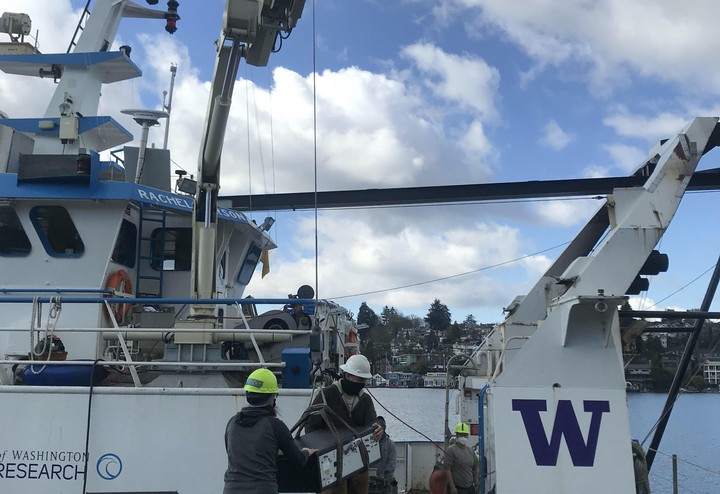Methane Venting from Forearc Faults in the Puget Sound Estuary
 Instrumenting the R/V Carson
Instrumenting the R/V CarsonPuget Sound, the largest estuary by volume in the continental United States, hosts large fields of methane gas venting from the seafloor. Multibeam and single-beam sonar data identified the acoustic signature of 350 methane plumes with emission sites that are co-located over deep faults that penetrate the entire Cascadia forearc crust. Fluid samples from terrestrial hot springs and wells that surround the estuary contain a helium-3 isotope signature indicating a deep fluid source that ascends from the underlying Cascadia Subduction Zone. However, data from our previous study suggests that estuary emission sites lack helium isotope signatures expected from an underlying reservoir at the plate-interface. Alternative CH4 source regions include the igneous Siletz basement or overlying Holocene sediments that cover seafloor. We propose a 2-stage program to constrain fluid and gas composition in order to identify the sub-surface reservoir and pathways for the methane gas and fluid venting into the estuary seawater.. Funding provided by the National Science Foundation (NSF).